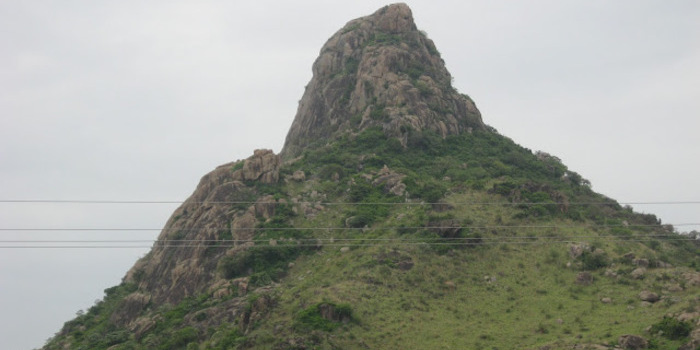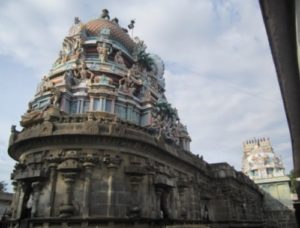Nedungunam Sri Yoga Rama Temple – A Unique temple with Lord Rama in Yogic Posture !!
The Yoga Rama temple is the one where Lord Rama is found in a unique Chin Mudra Posture listening to Lord Hanuman’s Vedic Recitals, without his bow and arrow. The temple is located in Nedungunam, that is located some 24kms to the South of Vandhavasi on the Kanchipuram – Thiruvannamalai Route. This temple is believed to have been constructed by the king Krishnadeva Raya and so it is estimated to be 500 yrs old. This temple is built in approx. 90,000 Sqft Area and this is considered as the biggest Rama Temple in Tamilnadu. The Sthala Theertham is called as Sukha Theertham or Surya Theertham. The Sthala Vriksham is Vilwa tree.
As per the Sthala Purana, it is said that Lord Rama was on His way back to Ayodhya after defeating Ravana and during that time, Sugha Maharishi (a saint in the form of a parrot) was performing a penance in order to get the darshan of Lord Sri Rama. Pleased with his prayers, Lord Rama provided His darshan to him and on his request, he also stayed here in this place for one day. It is said that though Rama was in a hurry to return to Ayodhya after his 14 years of exile, He did not refuse the hospitality of Sugha Maharishi. Hence the place is known as Nedungunam (means Noble Quality).
There is yet another interesting story associated with this temple. It is said that during the stay at Sugha Maharishi’s place, Lord Rama and Hanuman dined on a single plantain (Banana) leaf. During that time, Lord Rama drew a line in the middle of the leaf in order to facilitate easy use for both of them. It is believed that the line later became a permanent mark on the plantain leaf 🙂 This incident is supposed to have happened in Nedungunam.
The main God Lord Rama is found sitting calmly in the yogic posture with His right hand on the chest. He did not have any weapons in His hands since he was returning from Srilanka after defeating Ravana. The Goddess Sita is found with the Lotus flower in Her right hand and Her left hand was pointing to the feet of Lord Rama. (Maybe She implies her devotees that their destiny lies at the feet of the Lord !!). Brother Lakshmana is found standing on the right side of Lord Rama with weapons. Lord Hanuman is found inside the main sanctum itself chanting the Vedas obediently before the Lord. He is found sitting just opposite to Lord Rama reading out the Vedas for Him. The inner Prakara around the main sanctum is found a few feet underground and so one has to bend down while entering and exiting the circulatory path (Indicates that everyone has to be very humble in the place of Lord !!).
Inside the Rajagopuram, we have the second gopuram which is known as “Kili Gopuram” (Meaning Parrot Gopuram) which was built in the honor of the Sugha Maharishi. It is believed that the Maharishi stands as a hill next to the temple. The hill is called Dheergachala (long hill) and looks like the head of a parrot from a certain angle. Sri Padham (The divine foot) of Lord Rama along with Sanku Chakram (Conch and Discus) can be found on the top of the hill, as an evidence to the fact that Lord Rama had given darshan to Sugha Brahma Maharishi.
The Utsava Moorthy of this temple is called the Vijaya Raghava Perumal signifying His victory over Ravana. There is a separate shrine for His consort Sri Sengamalavalli Thayar. Every panel of the Gopuram has beautiful scenes from Ramayana and Dasavathara depicted on them.
Apart from these, we have the shrines of Garudalwar, Chakarthalwar, Kalyana Venkatesa Perumal, and Sanjeevihanuman. Another significance is that this temple has a separate shrine for Vykanasachaaryar who originated the Vykanasa Agama. He is found in a separate shrine with 4 of His disciples.
This temple is a unique one where one could see the rare “Santha Murthy” form of Lord Rama. Hence, praying the Lord here in this temple ensures Peace of Mind and prosperity to the devotees.






